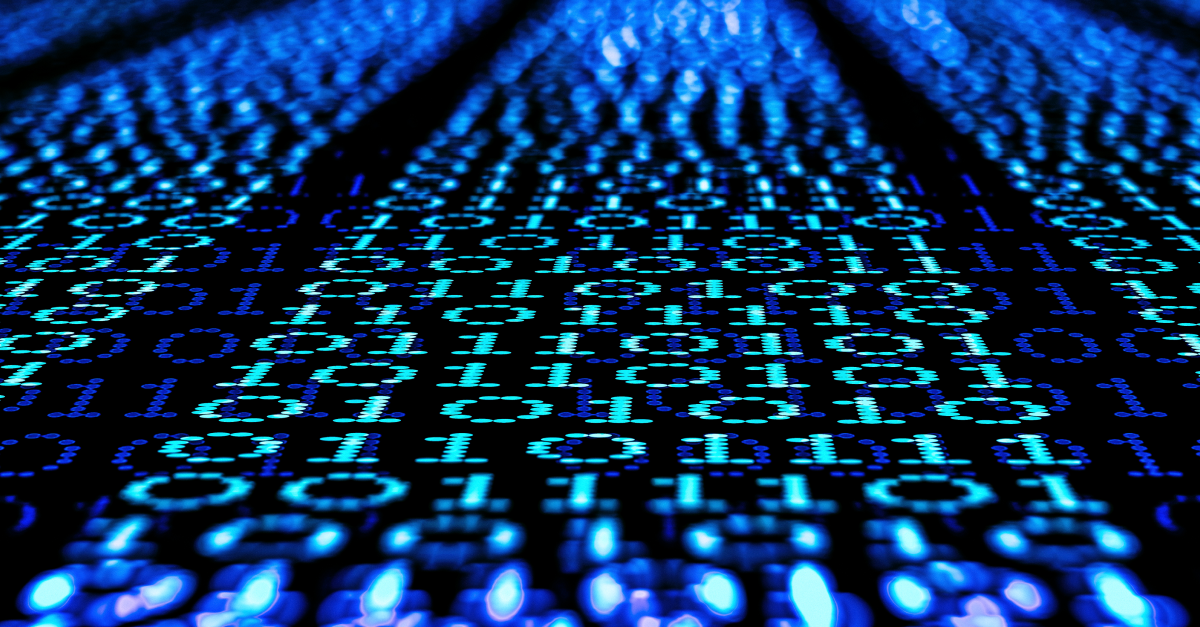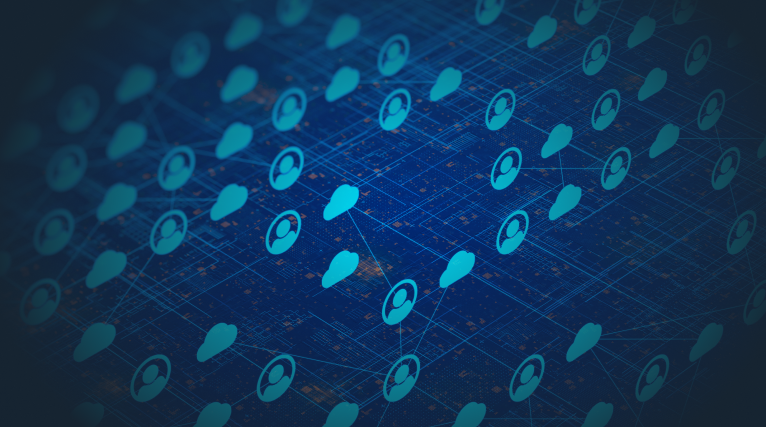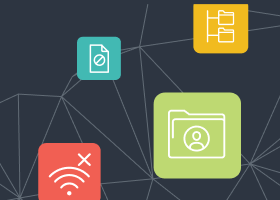Remote Monitoring and Management (RMM) Software Guide
As your IT environment expands, so does the need for smarter oversight. Managing systems manually is simply not scalable, and that’s where Remote Monitoring and Management (RMM) proves its value.
RMM gives you a centralized way to monitor system health, automate routine maintenance, and respond to potential issues before they disrupt operations. It helps you maintain a stable environment and keeps your team focused on strategic priorities.
Whether you’re leading internal IT or delivering services as a Managed Service Provider (MSP), RMM helps you stay ahead of the curve. In this guide, we’ll break down what RMM is, what it enables, and how it drives more efficient, reliable IT operations.
Let’s jump in and learn:
- What Is Remote Monitoring and Management (RMM)?
- Core Features and Capabilities of RMM Software
- How to Get Started with Remote Monitoring and Management
- Top Benefits of Using RMM Software
- Must-Have Features in a Remote Monitoring System
- Must-Have RMM Features
- Proactive IT Support with Remote Monitoring and Management
- Case Study
- Conclusion
- Frequently Asked Questions
What Is Remote Monitoring and Management (RMM)?
The RMM solution is designed to help IT administrators and MSPs remotely monitor, manage, and maintain IT infrastructure from a centralized console. This includes everything from servers and endpoints to networks and mobile devices.
With an RMM agent installed on each asset, real-time performance data is continuously fed to a central dashboard, enabling technicians to detect issues early, automate routine tasks, and resolve problems without needing to be on-site.
Core Features and Capabilities of RMM Software
The best remote monitoring software combines a robust set of capabilities designed to automate workflows, enhance security, and streamline IT operations. These features work seamlessly to provide full visibility and control across your environment.
- Real-time remote monitoring and alerting: Continuously tracks the health and performance of all managed devices 24/7, sending instant alerts on anomalies like high CPU usage or low disk space.
- Behind-the-scenes remote maintenance: Enables technicians to gain secure remote access to devices to troubleshoot issues, run scripts, and manage system processes without disrupting the end-user.
- Automating routine IT management: Automates repetitive tasks like software updates, disk cleanups, and patch deployment across thousands of machines simultaneously, freeing up IT resources.
- Active management of third-party solutions: Integrates with leading antivirus and backup solutions, allowing admins to manage security policies and view threat reports from a single dashboard.
- Enhanced analytics and reporting: Translates vast amounts of collected data into insightful reports on network performance, device health, asset inventory, and technician activity.
- Integration with IT service management (ITSM): Syncs with PSA and ticketing systems to automatically create service tickets when an alert is triggered, ensuring issues are tracked and resolved efficiently.
- Scalability and multi-tenancy for MSPs: A cloud based RMM with multi-tenancy allows MSPs to manage multiple, distinct client environments from a single, secure platform.
How to Get Started with Remote Monitoring and Management
Deploying an RMM requires careful planning. To ensure a successful implementation, you should consider the following:
- Evaluate what needs to be monitored: Begin by conducting a thorough audit of your entire IT estate. Identify all critical assets, servers, workstations, network devices, and cloud infrastructure to ensure your chosen RMM solution provides comprehensive coverage.
- Determine who needs what access: Implement role-based access control (RBAC) to define what each technician can see and do within the RMM platform. This is a crucial Practice for Secure Remote Work that limits access to sensitive functions.
- Document integration set up with other systems and workflows: Map out how the RMM will integrate with your existing tools, such as your ticketing system and security software, to ensure a smooth workflow and prevent data silos.
- Determine resource requirements: Assess your current hardware and network bandwidth to ensure they can support the RMM agent's activity without impacting performance.
Top Benefits of Using RMM Software
- Enables 24/7 system visibility and performance tracking.
- Reduces downtime with real-time alerts and automated responses.
- Centralises control over all endpoints from a single dashboard.
- Improves IT efficiency through proactive issue detection.
- Lowers operational costs by automating routine tasks.
- Enhances security with continuous patching and threat monitoring.
- Supports scalability without increasing IT headcount.
- Minimises manual intervention through scripted workflows.
- Ensures faster incident resolution with remote troubleshooting.
- Boosts compliance by maintaining consistent system configurations.
Must-Have Features in a Remote Monitoring System
When selecting the best remote monitoring software, prioritize platforms that offer a robust and integrated feature set. Look for a solution that combines:
- Comprehensive Monitoring: Real-time visibility into all endpoints, servers, and network devices.
- Powerful Automation: Built-in scripting tools to streamline repetitive tasks and reduce manual effort.
- Secure Remote Access: Fast, reliable control of endpoints to resolve issues without onsite visits.
- Integrated Patch Management: Centralized deployment and tracking of operating system and third-party updates.
- Robust Reporting: Detailed analytics and dashboards on system health, asset inventory, and performance trends.
These capabilities are essential for maintaining secure, efficient, and resilient IT environments, whether you're managing internal infrastructure or supporting clients at scale.
Must-Have RMM Features
- Monitoring & Alerting: (Bell icon) 24/7 real-time system tracking.
- Automation & Scripting: (Gears icon) Automate patches, updates, and maintenance.
- Remote Control: (Desktop icon) Secure, instant access for troubleshooting.
- Reporting & Analytics: (Chart icon) Data-driven insights into IT health.
- Third-Party Integrations: (Puzzle piece icon) Connects with security and backup tools.
Proactive IT Support with Remote Monitoring and Management
Remote Monitoring and Management is a strategic approach to IT operations. It transforms reactive, chaotic IT support into a proactive, efficient, and resilient function. The right RMM solution gives teams visibility into issues before they escalate and the ability to resolve them remotely, ensuring business continuity, security, and scalability.
That’s exactly what Egnyte delivers.
With Egnyte, Managed Service Providers (MSPs) gain centralised oversight, automated governance, and cloud-first control, all from a single platform. It empowers teams to enforce compliance, manage risks, and deliver seamless support no matter where endpoints or users are located.
Case Study
How Egnyte Helped Kinetix MSP Slash Downtime and Scale Smarter
For Kinetix, a managed service provider focused on biotech, consistent access and uptime weren’t just expectations; they were requirements. With Egnyte, the team gained centralized control, automated governance, and a streamlined approach to IT operations. It gave them the confidence to support their clients reliably and stay ahead of compliance demands.
Biotech-focused MSP Kinetix turned to Egnyte to modernise its IT operations. The results speak volumes:
- Near-Zero Downtime: Clients stayed online and operational; no glitches, no emergency calls.
- Automation That Gets Things Done: Compliance and governance workflows ran quietly in the background.
- All-in-One Oversight: Kinetix managed all client data through a single, unified dashboard.
- Real ROI: More efficiency translated into $300K+ in new annual revenue.
Conclusion
When 70% of organizations face serious disruption after a data breach, it’s clear that reactive fixes and limited visibility aren’t enough. IT teams must stay ahead of issues, and that’s exactly what Remote Monitoring and Management (RMM) makes possible. With real-time insights and remote control, RMM helps resolve problems before they impact users or operations.
But system health is only half the story.
Your data is the other half, constantly in motion across devices, clouds, and endpoints. If it’s not governed, it’s exposed.
That’s where Egnyte comes in. With unified content governance, Egnyte brings proactive control to your data layer. It secures unstructured content, simplifies compliance, and ensures visibility across your environment.
RMM protects your infrastructure. Egnyte protects your data. Together, they help you stay secure, compliant, and ready for what’s next.
Frequently Asked Questions
Q. Is RMM safe?
Yes, when properly configured. Reputable RMM solutions use strong encryption, multi-factor authentication, and role-based access controls to secure remote connections, ensuring that IT management is performed safely.
Q. Is RMM suitable for small businesses?
Absolutely. A cloud based RMM is highly scalable and cost-effective, allowing small businesses to automate IT tasks and receive enterprise-level support without the need for a large, dedicated IT staff.
Q. How do I choose the right RMM tool?
Evaluate your specific needs. Look for a tool with robust automation, real-time alerting, seamless integrations, and strong security features. Comparing options to find the best remote monitoring software for your environment is key.
Q. What is the difference between RMM and MDM?
The RMM definition covers broad IT infrastructure like servers and desktops, focusing on performance and maintenance. MDM (Mobile Device Management) focuses specifically on securing and managing mobile devices like smartphones and tablets.
Q. What is the difference between RMM and UEM?
RMM is focused on the health and performance of IT assets. UEM (Unified Endpoint Management) is a broader concept that unifies the management of all endpoints (desktops, mobile, IoT) under a single set of policies, often with a stronger focus on user profiles and security compliance.
Additional Resources

Understanding Data Monitoring
See how automated rules, alerts, and dashboards maintain high-quality, reliable data.

How to Manage a File Server
File server management software centralizes file storage, sharing, permissions, and oversight so teams can securely access ...

Best Practice for Secure Remote Work
A secure way for users to access internal networks, apps, and files from anywhere using authenticated, ...